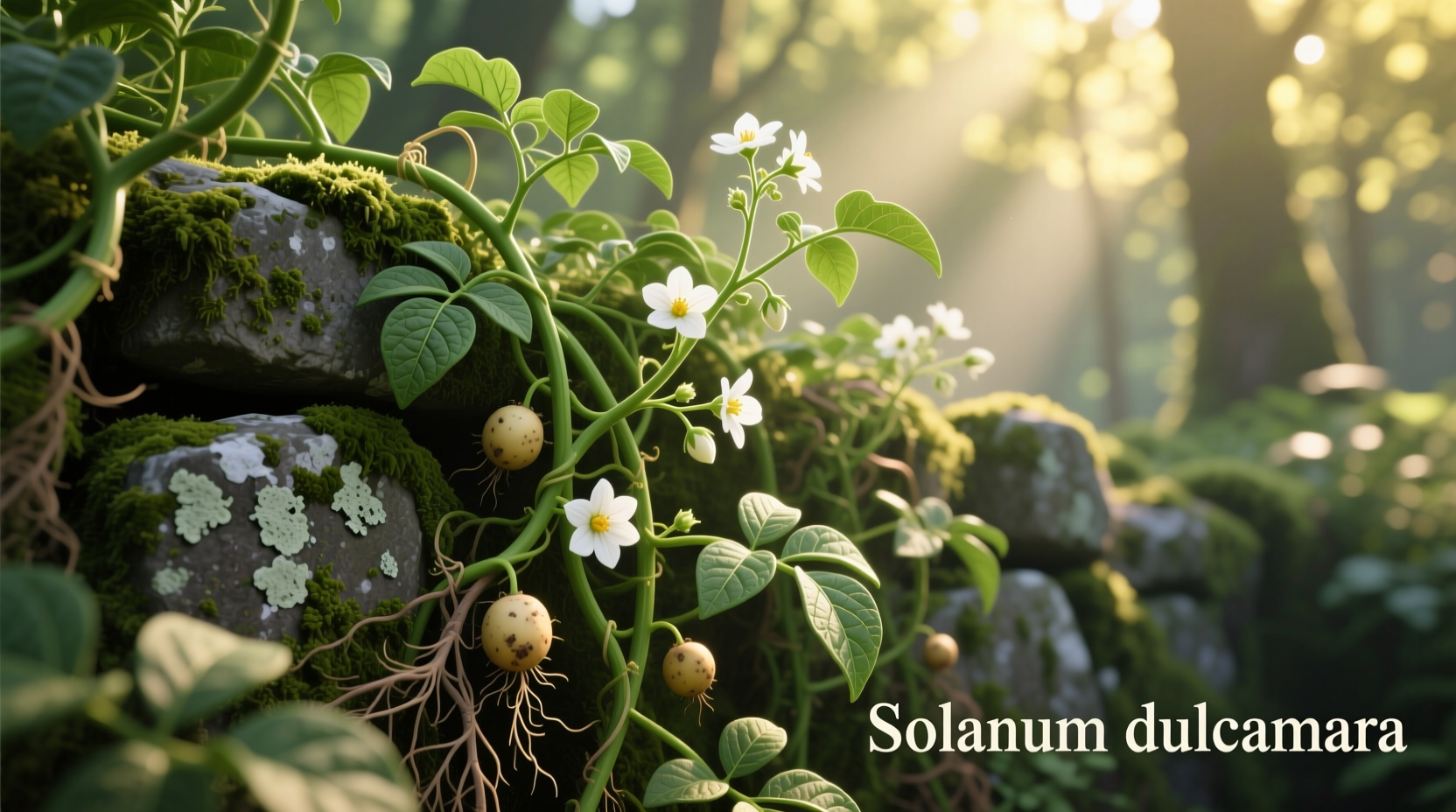Wild potato vine (Solanum dulcamara) is a toxic plant commonly mistaken for edible potato varieties. All parts contain solanine and other glycoalkaloids that can cause severe poisoning. Unlike cultivated potatoes (Solanum tuberosum), this invasive species produces bitter, poisonous berries and should never be consumed.
Discovering an unfamiliar vine in your garden can spark both curiosity and concern. If you've spotted what appears to be a wild potato vine, you need immediate clarity about its safety and characteristics. This comprehensive guide delivers essential identification features, toxicity levels, and practical management strategies verified by botanical experts and agricultural authorities.
Identifying Wild Potato Vine: Key Characteristics
Correct identification prevents dangerous mistakes. Wild potato vine (Solanum dulcamara), also called bittersweet nightshade, displays these distinctive features:
- Leaves: Alternate, heart-shaped with two small lobes at the base ("arrowhead" appearance)
- Flowers: Purple with prominent yellow stamens, blooming May-September
- Berries: Bright red when ripe (green when unripe), about 1cm diameter
- Stems: Woody at base, becoming green and vining, often with a purple tinge
- Growth habit: Climbing or trailing perennial reaching 2-4 meters

Why Wild Potato Vine Poses Serious Health Risks
The National Capital Poison Center confirms wild potato vine contains solanine and solasonine—potent glycoalkaloids that disrupt cellular function. These toxins concentrate in:
- Berries (highest concentration when green)
- Leaves and stems (especially new growth)
- Roots (often overlooked danger)
Symptoms of poisoning typically appear 6-12 hours after ingestion and include:
- Nausea, vomiting, and abdominal pain
- Headache and dizziness
- Neurological effects like confusion or hallucinations
- In severe cases: respiratory depression and cardiac complications
Children are particularly vulnerable due to their smaller body mass. The University of California's Integrated Pest Management Program notes that as few as 3-4 green berries can cause serious illness in a small child.
| Feature | Wild Potato Vine (Solanum dulcamara) | Edible Potato Plant (Solanum tuberosum) |
|---|---|---|
| Fruit/Berries | Bright red berries (poisonous) | Edible tubers underground (berries poisonous) |
| Flower Color | Purple with yellow center | White or pink with yellow center |
| Leaf Shape | Arrowhead-shaped with basal lobes | Compound leaves without basal lobes |
| Stem Texture | Woody at base, smooth | Green, herbaceous, often hairy |
| Native Range | Europe and Asia | Andes Mountains of South America |
Geographic Spread and Invasive Status
Originally native to Europe and Asia, wild potato vine has become invasive across North America. According to the USDA Plants Database, it's now established in 46 U.S. states and all Canadian provinces except Nunavut. Its aggressive growth pattern allows it to:
- Smother native vegetation through dense canopy formation
- Establish in diverse habitats from forests to wetlands
- Spread rapidly via bird-dispersed seeds
The plant's invasive status varies by region:
- Prohibited: Wisconsin and Minnesota classify it as a prohibited invasive
- Restricted: Several northeastern states regulate its sale and transport
- Watch list: Many western states monitor its expanding range
Safe Removal and Management Strategies
If you've identified wild potato vine on your property, immediate action prevents further spread. Follow these science-backed removal methods:
Manual Removal (Small Infestations)
Wear gloves and protective clothing when handling. The Cornell University Cooperative Extension recommends:
- Cut vines at soil level using loppers
- Dig out roots completely (even small fragments can regenerate)
- Place all plant material in sealed black plastic bags
- Expose bags to sunlight for 1-2 weeks before disposal
Chemical Control (Large Infestations)
For established populations, the University of California advises:
- Apply glyphosate-based herbicides in early spring during active growth
- Use triclopyr for targeted stem injection in sensitive areas
- Never apply near edible crops or water sources
- Monitor treated areas for 2-3 growing seasons for regrowth
Preventative Measures
Stop future invasions with these proactive steps:
- Inspect new plant purchases for hidden vine fragments
- Clean gardening tools after working in infested areas
- Plant native alternatives like Virginia creeper for similar visual effect
- Monitor fence lines and woodland edges regularly
Common Misconceptions Clarified
Several dangerous myths persist about wild potato vine:
- Myth: "The red berries are safe when fully ripe" Fact: Berries remain toxic when red—only concentration decreases slightly
- Myth: "It's just a wild version of garden potatoes" Fact: Different species with significantly higher toxin levels than potato berries
- Myth: "Cooking destroys the toxins" Fact: Solanine isn't broken down by cooking temperatures
When to Seek Medical Help
If ingestion occurs, act immediately:
- Call Poison Control at 1-800-222-1222 (US)
- Preserve a plant sample for identification
- Do NOT induce vomiting unless instructed
- Seek emergency care if neurological symptoms develop
The American Association of Poison Control Centers reports over 2,000 annual cases involving nightshade plant exposures, with children under 6 representing 70% of incidents.











 浙公网安备
33010002000092号
浙公网安备
33010002000092号 浙B2-20120091-4
浙B2-20120091-4